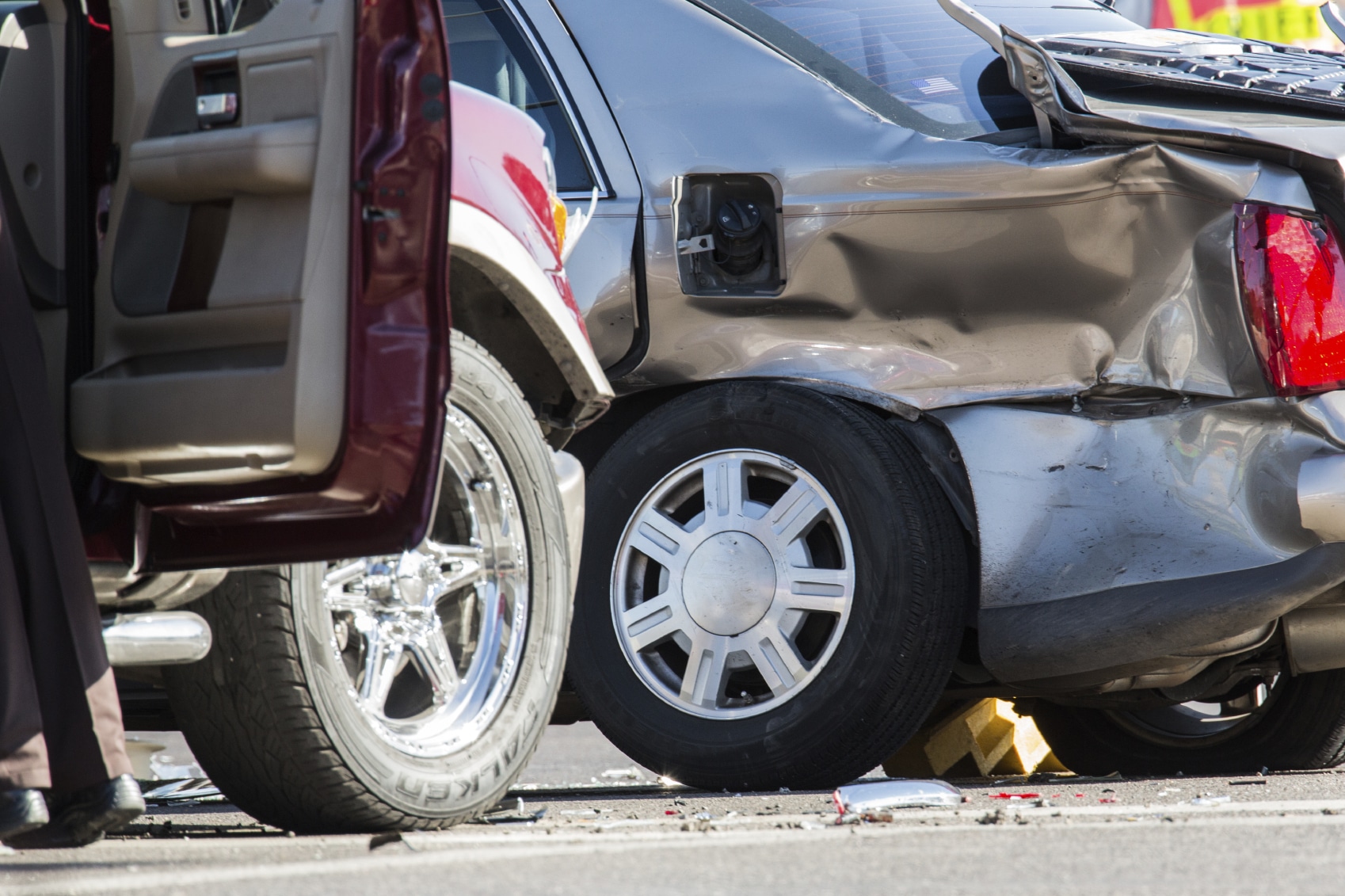While driving northbound on Trafalgar Road with her young daughter, Suzanne Padt was suddenly faced with white-out conditions. She could not see where she was going and went off the road, rolling her car over and ending up in a ditch. Fortunately within a short period of time, four cars and a police officer stopped to provide assistance. Neither Suzanne nor her daughter had sustained any injuries and they were extracted from their vehicle with the assistance of the “Good Samaritans” and placed in the police cruiser. Some personal items were retrieved from her car and handed to her as she sat in the back of the cruiser.
One of the rescuers had returned to his car; he had no coat and was cold, and felt the police officer had the situation under control. He was preparing to leave the scene. The other three rescuers were standing to the rear of the police car with the police officer standing near the police cruiser. Another vehicle that was also northbound came upon the scene. That driver lost control of his vehicle and struck the police cruiser and the three people standing behind it. Two of the three died and the third was catastrophically injured.
There is no general duty to assist those in peril. For many years rescuers injured as a result of a rescue attempt were denied recovery. The denial was based on either the concept of voluntary assumption of the risk or the acceptance that there was a further and intervening cause. The law has evolved and rescuers are now compensated if they are injured.
The question is whether Suzanne Padt, assuming her negligence was the cause of the first accident, is liable for the injuries and deaths of the “Good Samaritans”.
Suzanne and her husband Robert brought a motion for summary judgment dismissing the claims made against them. For the purpose of the motion, they asked that the Judge accept that it was the negligence of Suzanne Padt that caused the motor vehicle to go off the road and turn over in the ditch.
The position taken by Suzanne and Robert was that there was a duty of care owed to the rescuers but by the time of the second accident, the peril had passed, the rescue was complete and the duty of care had expired. The individuals killed or injured were no longer rescuers and were by then bystanders in the wrong place when the second accident occurred.
The decisions rendered in other similar cases were taken into consideration. Some of the facts of this case that were taken into consideration were:
- The Police Officer placed Suzanne Padt and her daughter in the police cruiser.
- The Police Officer returned to the vehicle in the ditch. The three rescuers were standing beside it. “They appeared to be waiting to see if there was anything else they needed to do to assist with the situation” (affidavit of police officer).
- One of the rescuers handed the police officer the purse, diaper bag and blankets along with other personal effects from the Padt vehicle. The police officer believed it was important to get this property to Suzanne Padt in order to assist in calming her child. He then handed the belongings to her as she sat in the back of the police cruiser.
- Suzanne in her affidavit said that it was a lady who gave her the bag. The judge, for the purposes of his reasons, stated that it did not matter who retrieved the bag. The important issue here is that one of the rescuers was involved in its recovery either by delivering the property to the police officer or to Ms. Padt. This represents a continuing involvement in the rescue.
- The investigation showed that very little time passed from the moment the diaper bag was given to Suzanne Padt and the second accident. As the police officer
closed the door to the cruiser he saw the northbound vehicle moving out of control toward the rescuers and the cruiser.
It was determined that there was not enough time between the delivery of the diaper bag and the collision to find that the rescue had ended and that the character of the rescuers changed to witnesses or true bystanders. At the time of the second accident, the rescue was ongoing.
The judge stated that it is not appropriate to leave to the rescuers the decision as to when the duty of care owed to them by the negligent party expires. This does not happen when the peril ends. The appropriate principal that applies is foreseeability as it applies to the negligent party, the person who created the peril.
He therefore did not dismiss the case against Suzanne Padt and Robert Padt. He stated that they continue to bear liability for the injuries suffered by the three rescuers.
If you have any questions regarding the issues addressed in this blog post , please do not hesitate to contact me directly. Click here to be redirected to my biography page and to obtain my contact information.
Donna Robinson
Citation: Maguire v.Padt, 2014 ONSC 609
COURT FILE NO: CV-11-437629-0000
**Author’s Note: This article was originally published in the Fall 2015 Edition of the Insurance Institute of Ontario – Ottawa Chapter Newsletter.**
Disclaimer: This article is provided as an information resource and is not intended to replace advice from a quaified legal professional and should not be relied upon to
make decisions. In all cases, contact your legal professional for advice on any matter referenced in this document before making decisions. Any use of this document does not constitute a lawyer-client relationship.


